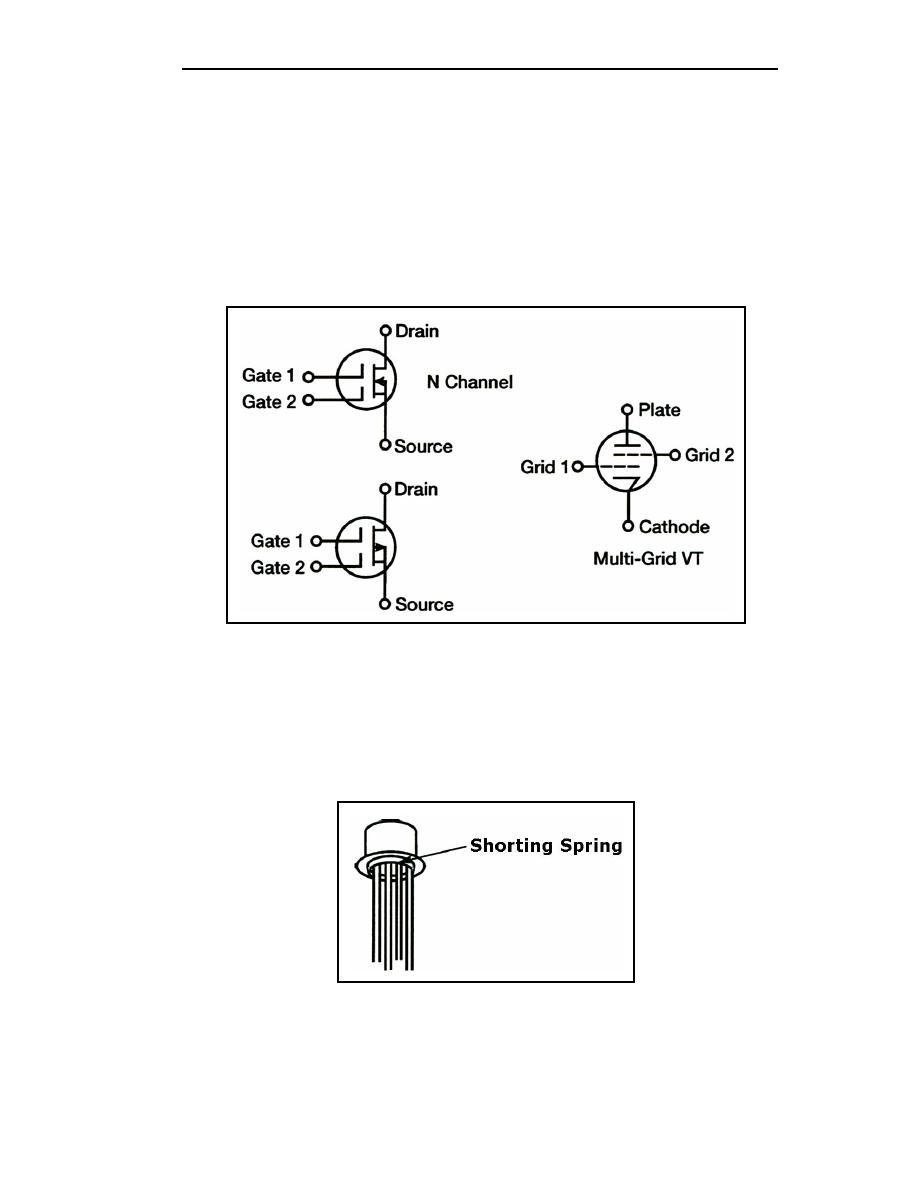
TC 9-62
signal determines the amount of current flow through the channel as long as the source and
drain voltages remain constant. When the gate voltage is at zero, essentially no current
flows since a gate voltage is required to form a channel.
3-95. The MOSFETs discussed so far have been single-gate MOSFETs. Another type of
MOSFET is the dual-gate type (see Figure 3-57). The gates in a dual-gate MOSFET can be
compared to the grids in a multi-grid vacuum tube. Since the substrate has been connected
directly to the source terminal, the dual-gate MOSFET still has only four leads (one each
for source and drain and two for the gates). Either gate can control conduction
independently, making this type of MOSFET a truly versatile device.
Figure 3-57. Dual Gate MOSFET
3-96. One problem with both the single- and dual-gate MOSFET is that the oxide layer
between gate and channel can be destroyed very easily by ordinary static electricity.
Replacement MOSFETs come packaged with their leads shorted together by a special wire
loop or spring to avoid accidental damage. The rule to remember with these shorting
springs is that they must not be removed until after the MOSFET has been soldered or
plugged into a circuit. Figure 3-58 shows one such shorting spring.
Figure 3-58. MOSFET Shorting Spring
3-36
TC 9-62
23 June 2005



 Previous Page
Previous Page
